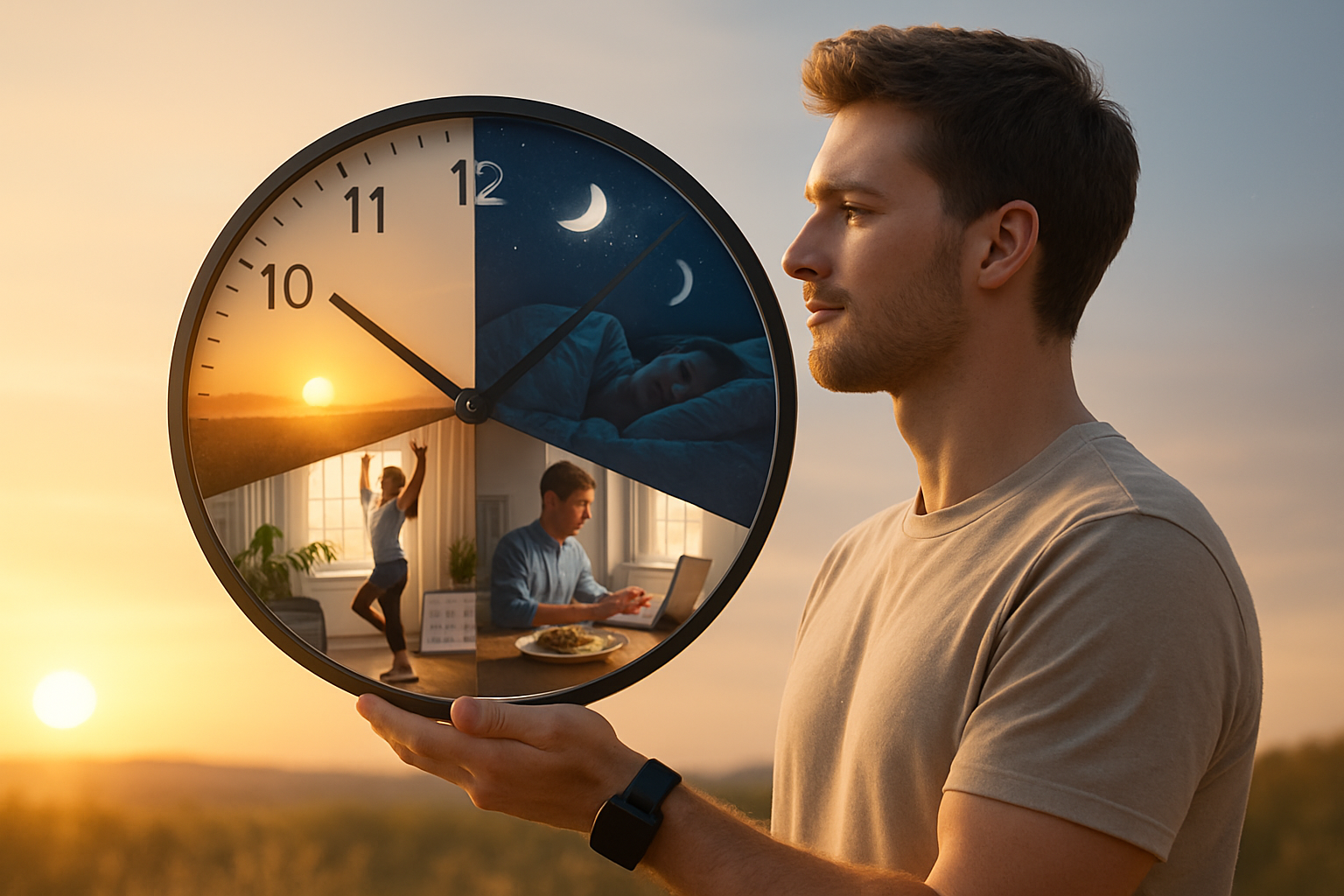Chronotype-Based Productivity: Aligning Your Work with Your Body Clock
Imagine a world where your daily schedule perfectly matches your natural energy rhythms, boosting your productivity and well-being. What if you could harness the power of your internal clock to optimize your work performance? Welcome to the fascinating realm of chronotype-based productivity, where science meets lifestyle design to revolutionize how we approach our daily tasks.

Understanding Chronotypes: The Science of Your Internal Clock
At the heart of chronotype theory lies the field of chronobiology, which studies the natural internal processes that regulate our sleep-wake cycle, known as the circadian rhythm. This 24-hour cycle is influenced by various factors, including light exposure, hormone production, and genetic predisposition.
Chronotypes refer to the natural inclination of an individual to be more alert and productive at certain times of the day. While the concept of morning larks and night owls has been around for centuries, modern research has expanded our understanding of these biological preferences.
Dr. Michael Breus, a clinical psychologist and sleep specialist, has identified four main chronotypes:
-
Lions: Early risers who are most productive in the morning
-
Bears: Those who follow the solar cycle and are most productive in the middle of the day
-
Wolves: Night owls who peak in productivity during the evening
-
Dolphins: Light sleepers with irregular sleep patterns and bursts of productivity throughout the day
Understanding your chronotype can provide valuable insights into your optimal times for focus, creativity, and physical activity.
The Impact of Chronotype Alignment on Workplace Performance
Research has shown that aligning work schedules with individual chronotypes can lead to significant improvements in productivity, job satisfaction, and overall well-being. A study published in the Journal of Applied Psychology found that employees who worked hours that matched their chronotype reported higher levels of job satisfaction and lower levels of stress.
Moreover, a 2018 study in the journal Sleep demonstrated that night owls forced to work early morning shifts experienced more significant cognitive impairment compared to their early bird counterparts. This misalignment, known as social jetlag, can lead to decreased productivity, increased errors, and potential health issues over time.
Identifying Your Chronotype: Tools and Techniques
Determining your chronotype is the first step towards optimizing your daily schedule. While there are various online quizzes and assessments available, one of the most comprehensive tools is the Munich ChronoType Questionnaire (MCTQ), developed by chronobiologist Till Roenneberg.
This questionnaire takes into account factors such as:
-
Natural wake and sleep times on work-free days
-
Exposure to natural light
-
Caffeine consumption patterns
-
Physical activity levels
By analyzing these factors, the MCTQ can provide a more accurate assessment of your chronotype than simplistic morning person vs. night owl categorizations.
Designing Your Optimal Day: Chronotype-Based Scheduling
Once you’ve identified your chronotype, the next step is to structure your day to capitalize on your natural energy peaks. Here’s a general guide for each chronotype:
Lions:
-
Schedule important tasks and meetings in the morning
-
Use afternoon hours for collaborative work and less demanding tasks
-
Wind down in the evening with relaxing activities
Bears:
-
Start the day with light tasks to warm up
-
Schedule high-priority work for late morning to early afternoon
-
Use late afternoon for creative tasks and brainstorming
Wolves:
-
Begin the day with administrative tasks
-
Schedule important meetings and focused work for late afternoon and evening
-
Use nighttime hours for creative pursuits
Dolphins:
-
Capitalize on bursts of energy throughout the day
-
Schedule challenging tasks during peak alertness periods
-
Allow for flexibility in the daily routine to accommodate irregular sleep patterns
Overcoming Challenges in Chronotype Alignment
While aligning your schedule with your chronotype can lead to significant improvements in productivity and well-being, it’s not always feasible in traditional work environments. Here are some strategies to help navigate these challenges:
-
Communicate with your employer about flexible work hours if possible
-
Use your commute time strategically based on your chronotype
-
Adjust your light exposure to help shift your circadian rhythm
-
Create a consistent sleep schedule, even on weekends, to stabilize your internal clock
Chronotype Wisdom: Quick Tips for Optimized Living
-
Light exposure: Maximize natural light during your active hours to reinforce your circadian rhythm
-
Meal timing: Align your eating schedule with your chronotype for better digestion and energy levels
-
Exercise timing: Schedule workouts during your peak energy hours for maximum benefit
-
Power naps: Short naps can be beneficial, but time them according to your chronotype to avoid disrupting nighttime sleep
-
Caffeine consumption: Adjust your caffeine intake based on your chronotype’s energy patterns
-
Temperature regulation: Optimize your environment’s temperature to match your chronotype’s sleep-wake cycle
As we continue to unravel the complexities of human biology, chronotype-based productivity offers a promising avenue for enhancing our work-life balance and overall well-being. By understanding and respecting our natural rhythms, we can create schedules that not only boost our productivity but also contribute to a healthier, more harmonious lifestyle. Embracing your chronotype isn’t just about optimizing work performance—it’s about aligning your entire life with your body’s innate wisdom, paving the way for improved health, happiness, and fulfillment.




